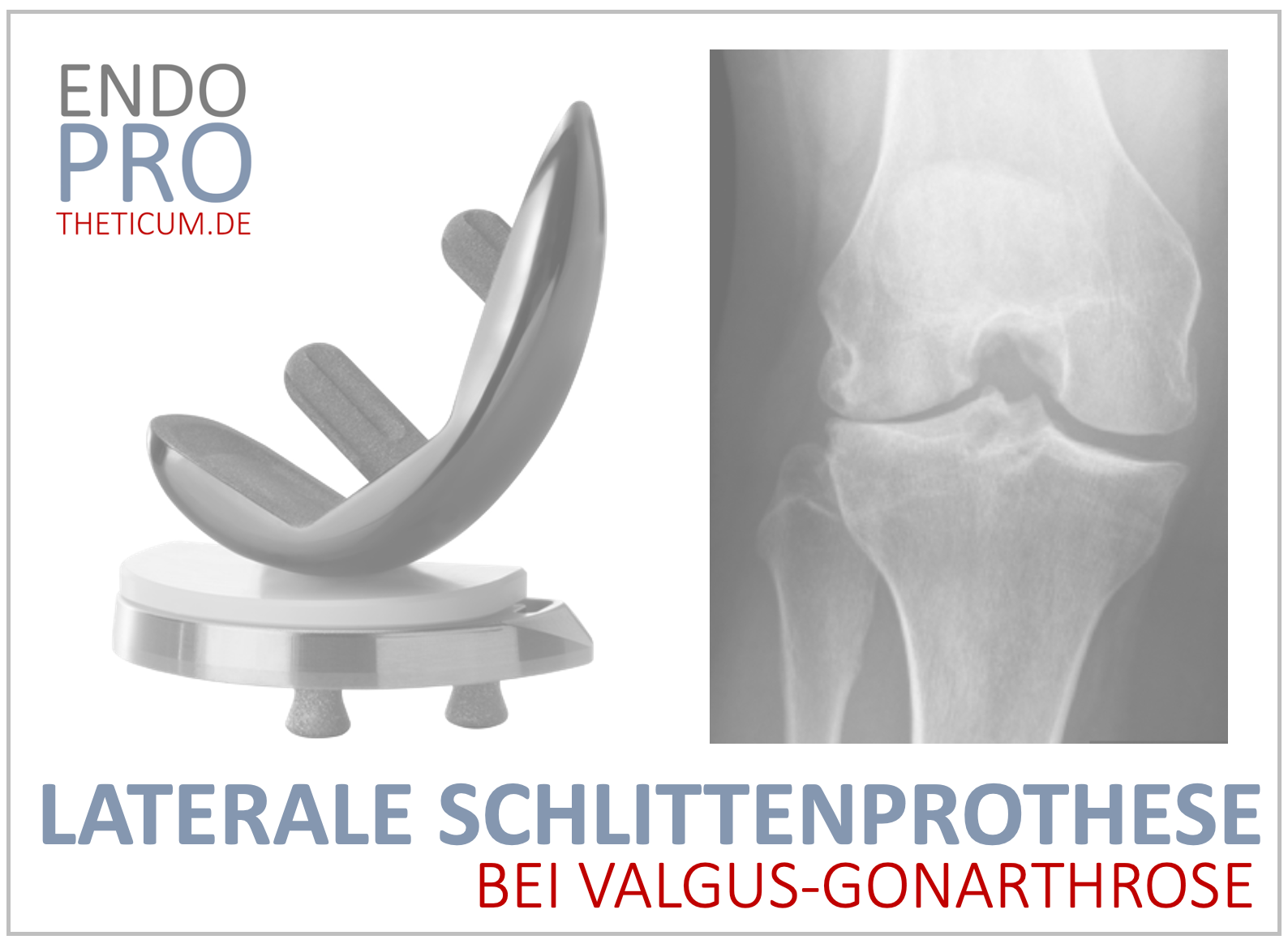Pain after a sled prosthesis – what to do?
What should you do if pain persists after a sled prosthesis?

The knee sled prosthesis, also known as a unicondylar knee prosthesis or partial joint replacement, is a proven and minimally invasive treatment method for osteoarthritis-related knee pain. Despite the advantages and faster recovery compared to total endoprosthesis, postoperative pain can also occur after sled prosthesis. This comprehensive guide highlights the common causes of pain after a sled prosthesis and presents effective therapeutic measures. We also address what late problems such as retropatellar arthrosis or residual knee arthrosis can occur.
What is a sled prosthesis?
The slide prosthesis is used for unilaterally advanced osteoarthritis, often in the medial or, more rarely, in the lateral compartment of the knee joint. Unlike total endoprosthesis, the slide prosthesis only replaces the affected part of the joint and leaves healthy structures intact.
- Advantages of the sled prosthesis:
- Minimally invasive procedure.
- More natural feeling of movement.
- Faster healing process.
- Restrictions:
- Not suitable for all patients, e.g. B. in inflammatory joint diseases.
Possible causes of pain after a sled prosthesis
1. Postoperative overload
- Description: Immediately after surgery the knee is tender. Pain can result from excessive or intense stress that begins too early.
- Therapy: Rest, physiotherapy, taking mild painkillers.
2. Scar pain or skin irritation
- Description: Scarring or nerve irritation in the surgical area may cause discomfort.
- Therapy: Local massages, silicone plasters, laser therapy.
3. Instability of the knee joint
- Description: Instability can occur when the ligaments of the knee are overused or are not optimally balanced after surgery.
- Therapy: Adaptation of the rehabilitation, targeted muscle training, possibly surgical correction.
4. Suboptimal denture placement
- Description: Misalignments can cause friction and pain.
- Therapy: Imaging procedures for diagnosis, possibly revision of the prosthesis.
5. Residual knee osteoarthritis
- Description: A sled prosthesis only treats a portion of the joint. Over time, signs of wear and tear can occur in other areas of the joint.
- Special feature: Retropatellar arthrosis, in which the cartilage layer behind the kneecap degenerates, is common.
- Therapy: in severe cases, extension to a total endoprosthesis.
Diagnosis of postoperative pain after sled prosthesis
1. Clinical examination
- Palpation of the knee to localize pain.
- Mobility tests to check function.
2. Imaging techniques
- X-ray: Checking the placement of the prosthesis.
- MRI: Detection of soft tissue changes or remaining cartilage damage.
- CT: Detailed analysis if a prosthesis malposition is suspected.
3. Laboratory tests
- Rule out infections through blood tests and joint puncture.
Postoperative therapeutic approaches
1. Medication
- Painkillers: NSAIDs or paracetamol for pain relief.
- Anti-inflammatory drugs: cortisone injections for swelling.
2. Physiotherapy and rehabilitation
- Goal: Improve joint stability, mobility and muscles.
- Measures:
- Manual therapy.
- Electrotherapy.
- Aquatherapy for joint-friendly strengthening.
3. Operational options
- Prosthesis revision: In the event of loosening or misalignment.
- Extension to total endoprosthesis: If osteoarthritis progresses in other joint areas.
Long-term problems with a sled prosthesis
1. Progressive joint wear
- Even after a successful operation, signs of wear and tear can occur in the non-prosthetically treated knee area.
2. Retropatellar arthrosis
- Those affected complain of pain behind the kneecap.
- Solution: Depending on the severity, adjustment of therapy or surgical intervention.
3. Loosening of the prosthesis
- Can be triggered by material fatigue or insufficient bone substance.
- Treatment options include revision surgery.
Precautionary measures to avoid pain
1. Optimal rehabilitation
- Regular physiotherapy.
- Training patients on how to properly load the knee.
2. Weight control
- Avoiding excess weight as it reduces the load on the knee joint.
3. Adapted sports
- Joint-friendly activities such as swimming or cycling.
Conclusion
Postoperative pain after a knee sled prosthesis is possible in rare cases and can be triggered by various factors. Accurate diagnosis and individually tailored therapy are crucial to effectively treat symptoms and increase quality of life. Despite possible risks, the sled prosthesis remains an excellent option for patients with localized knee osteoarthritis if the indication is carefully determined.
MAKE AN APPOINTMENT?
You are welcome to make an appointment either by phone or online .



























